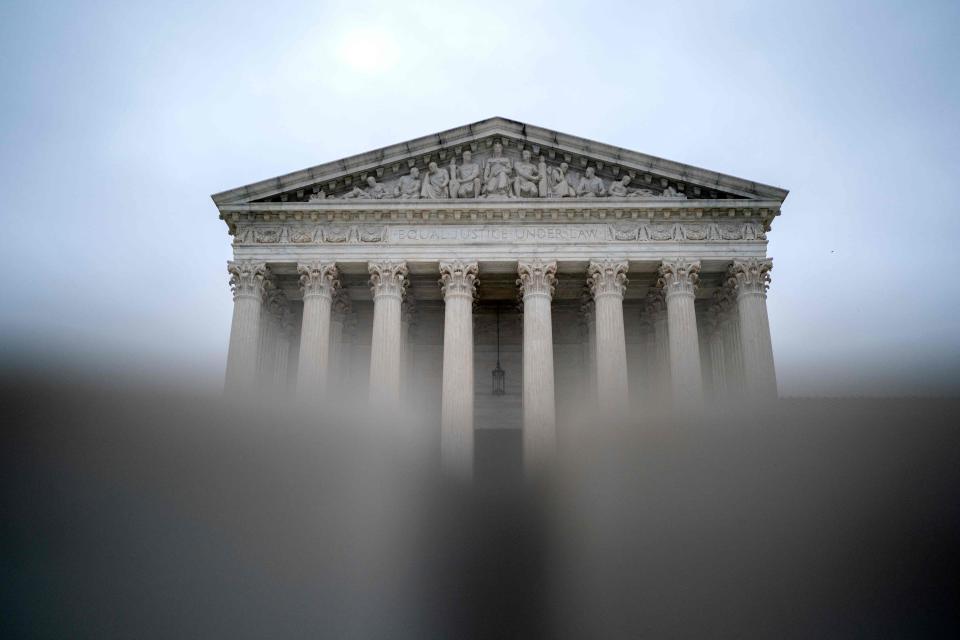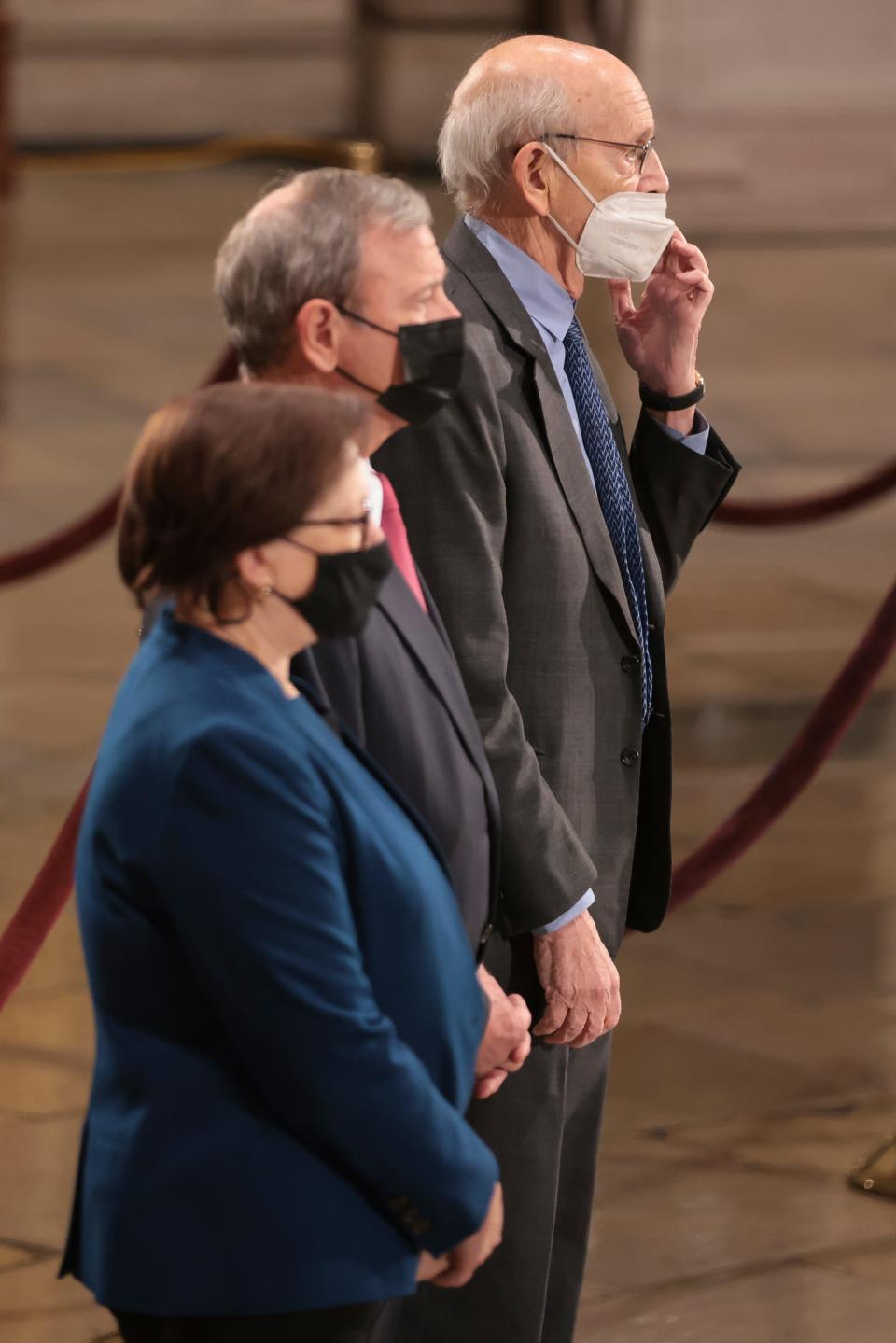The Supreme Court shadow docket: Alabama redistricting case renews fight among justices
- Oops!Something went wrong.Please try again later.
WASHINGTON – A Supreme Court ruling allowing Alabama's controversial congressional map to stand has exposed continued divisions among the justices over the practice of deciding major cases in a hurry on the high court's so-called shadow docket.
The nation's highest court allowed Alabama's redistricting plan to stand – for now – over objections from plaintiffs who asserted that state lawmakers violated the 1965 Voting Rights Act when they drew only one majority Black congressional district out of seven.
Alabama's population is 27% Black.
Lurking just below the battle over the congressional maps is a deeper dispute about how the high court considers emergency cases. Dueling opinions Monday in the Alabama case suggested there is still discord on the court about how that expedited process works.
Shadows: Texas abortion ruling renews criticism of Supreme Court's 'shadow docket'
'Nonsense': Supreme Court Justice Alito fires back at criticism of 'shadow docket'

The Alabama ruling "is one more in a disconcertingly long line of cases in which this court uses its shadow docket to signal or make changes in the law, without anything approaching full briefing and argument," Associate Justice Elena Kagan wrote. The case is a "serious matter ... which cannot properly occur without thorough consideration."
Associate Justice Brett Kavanaugh dismissed that argument in a concurring opinion, calling it "catchy but worn-out rhetoric" that he said was "off target."
What's the 'shadow docket'?
The Supreme Court usually decides a case after the parties submit months' worth of legal briefs and take part in an hourlong oral argument. The opinions are usually signed – so it’s clear how each justice voted – and they generally involve the court parsing complex questions about how to apply the Constitution or a federal statute.
Shadow docket disputes, by contrast, usually involve deciding whether to temporarily block a law while the underlying legal questions are considered by lower courts. The parties sometimes have days to file briefs, and there are generally no oral arguments.
The high court’s emergency docket drew fresh criticism last fall when the justices allowed Texas’ ban on abortion after six weeks of pregnancy to stand on a temporary basis, despite the 1973 Roe v. Wade decision that established the constitutional right to abortion.
"The majority’s decision is emblematic of too much of this court’s shadow-docket decision-making – which every day becomes more unreasoned, inconsistent, and impossible to defend,” Kagan wrote in a dissent in September.

Before that, the court unwound President Joe Biden’s eviction moratorium on the emergency docket, blocked state COVID-19 restrictions that limited gatherings in churches and synagogues, and required the federal government to keep migrants seeking asylum in Mexico.
Perhaps in response to the criticism, the court has scheduled an unusual number of shadow docket cases for oral argument. The justices heard arguments in a Texas abortion case, for instance, and handed down a signed opinion in December that allowed the law to stand while lower courts consider its constitutionality.
Dark money: Republicans signal fight as Supreme Court confirmation battle gears up
Breyer: Race, gender become factors in Supreme Court confirmation battle
Most recently, the court moved a challenge to Biden’s COVID-19 vaccine-or-testing mandates off the emergency docket and heard arguments in January. Days later, a divided court blocked enforcement of the requirement for large employers but permitted a vaccine mandate for health care workers at facilities that receive federal funding.
Alabama's Black voters
The emergency docket isn’t new. The Supreme Court needs some way to consider emergency requests to block a lower court's ruling. Associate Justice Samuel Alito pushed back on the criticism in September, calling some of it "rank nonsense." Because the court isn’t considering the merits of a case, he said, it can move more quickly.
It's a point Kavanaugh raised repeatedly in his opinion in the Alabama case on Monday.
"To reiterate," he wrote, "the court's stay order is not a decision on the merits."
But others note the expedited decisions do have a practical impact, in part because they can signal which way the court is heading and in part because they can run out the clock: By the time courts can address the underlying questions – which can take years – the dispute often resolves itself.
In the government's vaccine case, the Biden administration ultimately withdrew its mandate. The Texas abortion law, the most restrictive in the nation, remains in force.
In the Alabama voting suit, a three-judge federal panel ruled last month that the state’s proposed congressional districts likely violated the 1965 Voting Rights Act. The court ordered the state to try again before this year’s midterm elections.
By pausing that order on Monday, the Supreme Court’s decision will leave those maps in place for the state's primary in May – at least.
The court said it would hear arguments in the case later this year but didn’t say when. That leaves open the possibility that it won’t take up the dispute until after the November general election.
This article originally appeared on USA TODAY: Supreme Court: Alabama redistricting case renews shadow docket fight

